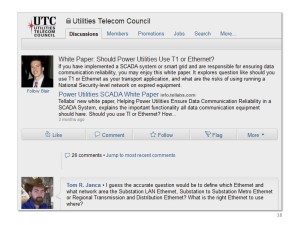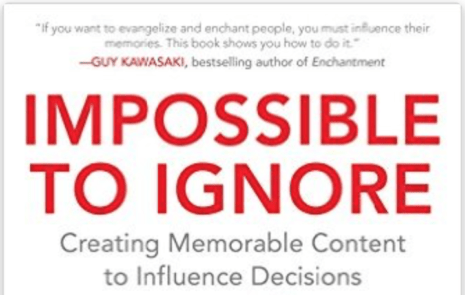
Content Marketing Question: How to Link Content to Sales?
I got so many questions on how to link content to sales at Content Marketing World that I couldn’t answer them all. For the next few weeks, I’ll blog answers to these questions.
“Is it ever possible to attribute a direct link between a particular sales outcome and any piece of content?”
Absolutely, yes! Here’s a story about how we linked content marketing directly to sales in long-cycle, carefully considered BtoB purchases.
Search for low-hanging fruit. Every sales force pursues the nearest, biggest opportunities. But no sales force can cover all the opportunities. Identify addressable markets that sales can’t cover well – geographic markets, segments or sub-segments.
If you can’t find under-addressed markets, seek out salespeople and distributors who are the most responsive in working with marketing to generate revenue.
Look for your hungriest salespeople. Perhaps they’re new to the company and trying to prove themselves. Perhaps they work solely on commission (rather than salary plus commission). Perhaps they’re manufacturers’ reps or your best distributors.
Feed these hungry salespeople a small set of your most qualified leads. It’s better to give them 3 to 5 great leads than 20 or 30 of lesser quality.
Don’t waste sales’ time with leads that are not well qualified! If you do, they’ll ignore all future leads, no matter how good the quality.
Also seek out product managers whose products get little attention from the sales force. They can help you fight for sales’ attention, while your content marketing can give their products a lift.
Make people into content marketing believers one at a time.
Expand the market by creating content to address underserved segments. Companies spread their sales forces thin. At Tellabs, the sales force could focus on global telecom operators, but they didn’t have the time to address electric utilities.
To address that gap, marketing created a content marketing program built on utilities’ questions about telecom equipment. Customers’ real questions are always a great place to start.

Look for the most challenging questions buyers must address during the buying journey. Marketing created a white paper to address a key, controversial technical question for utilities. We posted the paper in a LinkedIn group called the Utilities Telecom Council (UTC), which focuses on telecom networks for power utilities.
The white paper’s title came from a real customer question: “Should power utilities use T-1 or Ethernet?”
The top-line answer is, “It depends.” The in-depth answer is, it depends on exactly which communications services a utility needs to deliver. Utilities employ dozens of different services to keep the business connected.
Tellabs was able to take a neutral position on this question since it offered both T-1 and Ethernet solutions. In contrast, most competitors only sold one type of equipment or the other. Of course, they’d recommend the type they had to sell.
A couple of days after posting the paper, Tellabs got a super-technical question from a member of the UTC group. It was way over our heads in marketing. In fact, the question was so technical that a product marketer couldn’t address it either.
So we scrambled to recruit an engineer from the strategy organization. Marketing helped him join LinkedIn and the UTC group. There, he addressed the question himself.
As a result of his answer and some back and forth, UTC invited him to speak at a conference. His speech led to several inquiries, which were tracked manually and through marketing automation.
That’s how marketing could demonstrate that certain sales to electric utilities were directly linked to the speech and white paper. And prove that content marketing in LinkedIn groups could create customers and generate revenue.
Another way to demonstrate that content leads to sales is to check new marketing-qualified leads in the customer relationship management (CRM) system. See if the customer’s already in the system. If not, that’s a new customer resulting from marketing.
If the customer is already in the CRM system, check on how long it’s been since sales had contact with the customer. Talk to sales – at what point do they consider a customer dormant? One year, two years, three years? Beyond that agreed-on threshold, identify the exact customers you revived and track them through the buying process.
Look for market segments with shorter buying cycles. Another lesson learned: electric utilities make buying decisions much faster than the mainstream customers, the telecom operators.
Utilities make smaller purchases, so they make buying decisions faster. Utilities buy in 6 to 12 months, instead of 18 to 30 months for telecom operators. Shorter buying cycles make the value of content marketing clear more quickly.
To prove the value of content marketing, tackle a new or underserved segment. That makes your job of tracing revenue back to content marketing easier – since it’s the only activity to stimulate those sales. Partner with sales to get the deals closed.
This question came up at my Content Marketing Institute presentation on How to Speed the Journey from Content to Cash. Other questions in this series include:
- How does a B2B company start content marketing?
- How to deliver consistent content marketing messages to all buyer personas?
- How to keep content marketing always on message?
- How to link specific content marketing activities to sales?
- How to speed the buyers’ journey to a purchase?
- How to help buyers take the first step in the buying journey?
- How to measure meaningful web traffic and give content marketing the credit for it?
- What content marketing appeals to customers? What brings them back?
Contact Us





